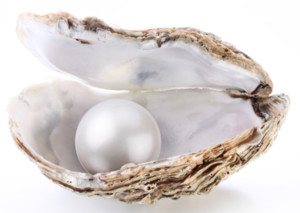Finding the Valor Within: Eshet Chayil (Part 2)
By Sara Esther Crispe: December 5, 2014: Category Decoding the Tradition, Inspirations
אשת חיל מי ימצא, ורחק מפנינים מכרה
Eshet Chayil mi yimtzah, verachok mipninim mikrah
“Who can find a woman of valor? For her value is far above pearls.”
Valor isn’t a word we hear used a lot in today’s day and age. Yet we should. It is so fitting for so many people and circumstances. And yet I often find when I ask a group of women to jot down adjectives describing the Jewish woman, valor is never one of the words chosen.
The entire text is based on the word for “valor.” The dictionary defines ‘valor’ as “strength of mind or body” or “personal bravery.” Personal bravery. I find that so profound as we are all fighting battles that often others are aware of. We all have inner strength that others may not see. But it is there. So too, one can be incredibly strong, physically, mentally, emotionally or spiritually, without others knowing.
Heroes are not only the people that the world recognizes or labels as such. There are endless silent heroes who transform lives in quiet, unknown ways. The definition of valor shows us that the power of who we are and who we are capable of becoming is not limited to what others necessarily see. We simply need to know it is there and utilize it.
Furthermore, the Hebrew word for valor, chayil, has an additional meaning. Pronounced slightly differently, the word also means ‘soldier.’ A soldier is one who must simultaneously focus on the immediate situation, doing everything possible to stay alive and safe, while also focusing on the long-term goal of winning not only the battle but the war. And if that isn’t enough, a soldier must do what protects his or her life while likewise protecting the life or the other soldiers in his or her platoon. A soldier is brave, strong, focused and determined. A soldier must know and believe in what he is fighting for and who he is fighting for. And a soldier must know how to follow orders and when to give them.
And so the Jewish woman is called by this term chayil. She both represents valor and what it means to be a soldier. She defines what it means to be a soldier. She is teacher, partner, cook, doctor, psychologist, mediator, homemaker, coordinator and so much more to her children, her husband as well as friends and family. Yet she is defender, prosecutor, police and superhero to those who threaten their wellbeing.
The verse then asks, who can find this woman of valor? In order to find, one must know what to look for. It is easy to give up and say that we have tried and simply couldn’t locate what we were seeking. But the Talmud does not allow for that. In the Tractate Megillah (6b) it states: “If one says he has looked and he hasn’t found, don’t believe him; if one says he has found and hasn’t looked, don’t believe him. But if one says that he has looked and he has found, believe him.” This is teaching us that nothing is for nothing. If we invest the hard work, if we are aiming to see the beauty and power within, we will find it. It may take time, but eventually it will be revealed. So who can find the woman of valor? The one who takes the time to truly seek her out. And it is not just about others finding the valor within, but even more so, about finding it within ourselves. We must know who we are and the abilities we have before others will truly appreciate them.
The verse then continues, comparing a woman to the pearl. However, clarifying that she is even more precious than this gem. In many English translations the word for pearl is replaced with other stones such as a ruby. Yet, the comparison to the pearl is foundational, essential and not replaceable.
The Hebrew word for pearl is pninim which shares the two-letter subroot both of the word for internal, pnimiyut, and for face, one’s external, panim. While generally the idea of internal and external seem to be opposite, the message here is quite clear. When one is true, the beauty on the face is a reflection of the beauty within. One’s face is the portal to one’s soul. And both should be beautiful. This is why the comparison is that the woman is more precious than the pearl. The pearl is hidden in the oyster, a harsh and ugly external, tucked away on the bottom of the ocean. Whereas a Jewish woman should be known and seen as a role model. Often modesty is mistaken with hiddenness. But that is not the case. A woman should be attractive, just not attracting. The former focuses on the internal, pnimiyut, which shines on the panim, the face. The latter only cares about the external thus denying and ultimately hiding away the essence of who she is.
The pearl is the only precious stone that is complete when it is found. A diamond must be cut, sanded and shaped from the rough. So too with many other gems. Yet the pearl, when found hidden within the oyster, is in its final state. It is imperfectly perfect when discovered and nothing is done to it to further beautify it.
Every stone has a process by which it comes to be. The diamond is the result of the eruption of rock, thus revealing the diamond that was encased within. The diamond teaches that sometimes when something seemingly negative happens like an eruption, that it is what was necessary to reveal the value that was within, waiting to shine.
The pearl, however, is a very different process. One in which the challenge and test are not external but become central and transformational. The pearl is formed through a process whereby something harmful to the life of the oyster came within. It could be a parasite or even grains of sand, but in order to protect itself, the oyster must combat what is foreign to it. To do so, it creates an extremely resilient and iridescent material called nacre and wraps over and over again what could have possibly destroyed it, had it not been dealt with. Eventually, when the wraps of nacre are strong enough, left within the oyster is the pearl.
A pearl, by definition, has at its core the unwanted challenge that it had to overcome. And through doing so, it transformed this foreign substance into a rare gem. It may look smooth, but right within is the evidence of the issue that it dealt with and won. That is the beauty of the pearl.
 In my research on the pearl I searched a number of sites that sell pearls and they all had a section with tell-tale ways of distinguishing between a real pearl and a fake pearl. The differences are astounding as while they are intended to be practical, they represent very deep points of human nature and how we know, emotionally and spiritually, who is being true and authentic and who is simply faking it with externals.
In my research on the pearl I searched a number of sites that sell pearls and they all had a section with tell-tale ways of distinguishing between a real pearl and a fake pearl. The differences are astounding as while they are intended to be practical, they represent very deep points of human nature and how we know, emotionally and spiritually, who is being true and authentic and who is simply faking it with externals.
Here are the differences I have found. While we may live in a society that pushes us to want to be perfect, clearly there is no such thing and as we see when it comes to the pearl, it is our differences, our imperfections and our variety that make us who we are, that make us valuable and that make us real!
- Fake pearls will be too perfect. They will appear to have a fantastic luster on every part of their surface. Real pearls are formed by nature and will always have some sort of imperfection if you look close enough.
- Fake pearls have no deviations in their size or the rhythm of their size increases in a graduated strand. Once again, in a real pearl necklace, it won’t appear flawless and there will be some variation in size.
- Fake pearls appear to have no difference in color from one pearl to another, seeming almost flat in tone, whereas a real pearl strand will have depth and include a body color and an overtone color.
- Fake pearls lack the luminosity of real pearls and don’t reflect light as well. Imitation pearls may look shiny but won’t show depth and true luster.
- Fake pearls feel light, and real pearls are more hefty.
- Rub your tooth against the pearl and you will feel the grainy, sandy material from the process of the pearl being created
- If you cut a pearl open, you will see its true nature.
In Part 3 we will discuss the hardly known or discussed woman this first verse is attributed to.
http://www.interinclusion.org/inspirations/finding-what-you-are-looking-for-eshet-chayil-part-3/
Finding the Valor Within: Eshet Chayil (Part 2),
























;)
;)
;)
;)
;)
;)
;)
;)
;)
;)
